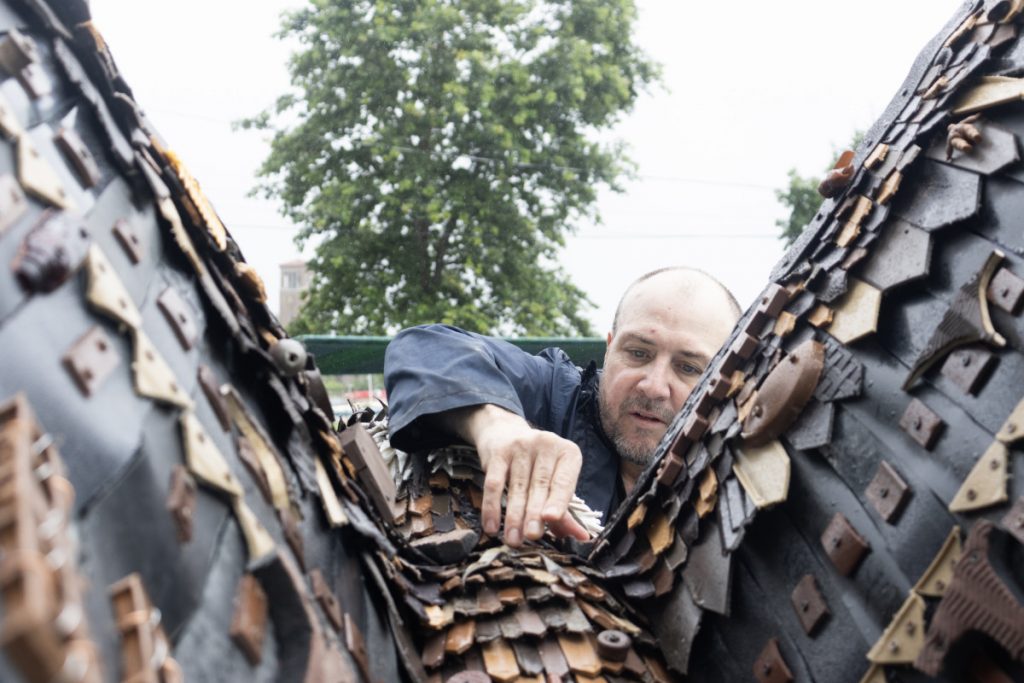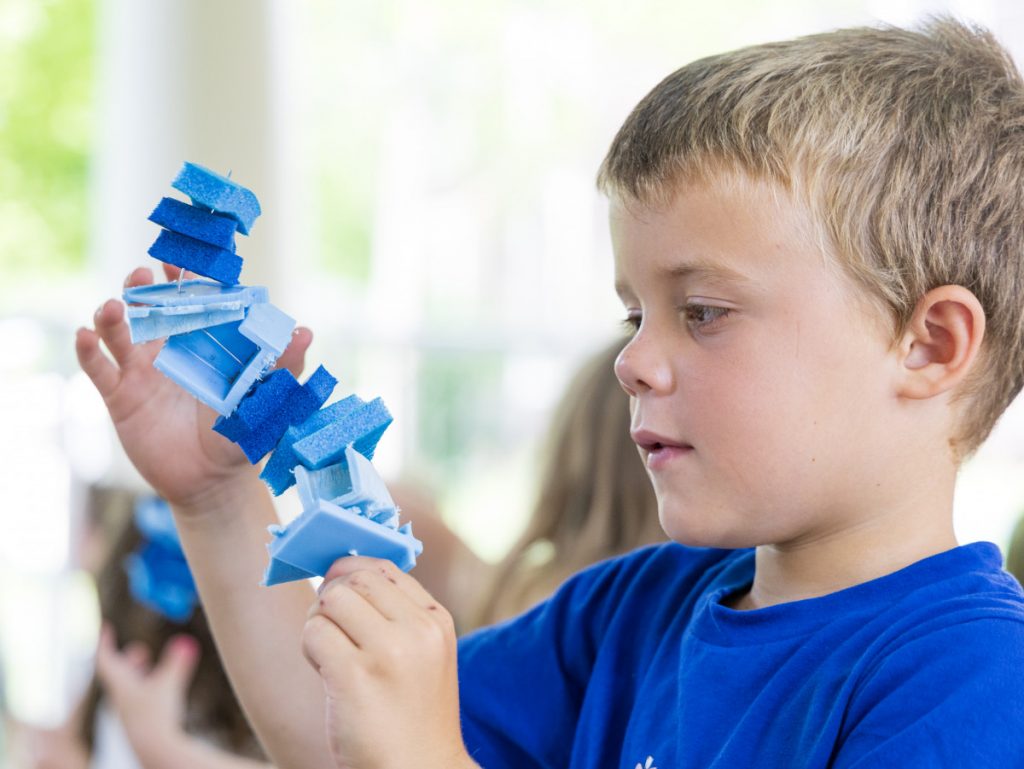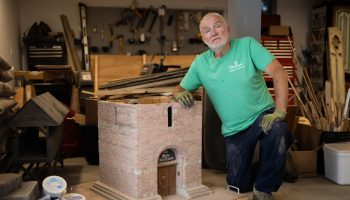
Steve Wright, an artist with Washed Ashore — Art to Save the Sea, guides a wing of the new osprey statue into place Thursday morning on the Athenaeum Hotel lawn, near Sports Club.
On Wednesday morning, Children’s School students completed some finishing touches for Chautauqua’s newest resident: a sculpture of an osprey, created entirely with plastic recovered from both the ocean and from the homes of Chautauquans.

Steve Wright puts finishing touches on the statue after it was placed in its final location Thursday.
On Thursday morning, the sculpture made its way to its permanent home on the lawn of the Athenaeum Hotel. And at 9 a.m. today, Brad Parks, conservation and education director of Washed Ashore – Art to Save the Sea, will deliver a lecture in Smith Wilkes Hall then lead a walking tour to the sculpture.
Chautauquans will certainly be familiar with Washed Ashore; last season, an exhibit featuring 14 pieces made by artists from Washed Ashore called Chautauqua Institution home. All of those pieces were made up of plastic collected from the shores of Oregon’s coast, and each piece created by the Washed Ashore artists plays into the project’s driving mission: bringing awareness to the plastic pollution crisis through art.
“(On) the exterior of the sculpture, you do see things that you use in your everyday life … whether it’s toothbrushes, flip flops, golf balls, lighters, (or) toys,” Parks said, describing the appearance of each Washed Ashore piece. “There are items that you recognize, and that’s really to get everybody to see that we all use plastic every day. How can we then identify something that we can replace or use more than once, and avoid single-use plastics because they’re so detrimental for the environment?”
For most of its history, Washed Ashore has relied on volunteers to collect plastic waste from Oregon’s beaches, then preparing the waste for artists to use in creating sculptures. This is done in the small town of Bandon, Oregon, on the southeastern coast where Washed Ashore is headquartered. The resulting artworks are shown in exhibitions across the country.

Asher Happe forms part of an osprey wing out of plastic Wednesday at Children’s School. The blue plastic was collected by Washed Ashore volunteers from Oregon beaches; more blue plastic was donated last summer by Chautauquans from their recycling bins.
Parks said that part of the reason Chautauqua’s new osprey is so unique is because of the source of much of its plastic: the homes – and recycling bins – of Chautauquans themselves.
“We (wanted) to look at how to engage the Chautauquans who were here last summer, and make them aware of (plastic pollution),” he said. “But we also wanted to incorporate some of the plastic that isn’t going to be recycled, that would be trash and potentially litter in the lake or somewhere else, to be part of the art piece.”
Parks said that the ultimate goal of the new osprey sculpture was to spread awareness amongst Chautauquans about plastic pollution, and to show how the plastic pollution crisis fits into their everyday lives — and that there is something individual Chautauquans can do about it. The osprey is the perfect animal to remind viewers that positive change is possible, he said.
Parks’ lecture will focus on the relationship between Chautauqua and its ospreys, who have long been strangers from the area due to human impacts on the environment. Concerted efforts to clean and protect Chautauqua Lake, and the osprey habitat, means the birds are finally starting to return home. Parks hopes that audiences will take a message of hope away from his talk, and that the osprey, now a permanent fixture at Chautauqua Institution — both in the sky and on the Athenaeum lawn — will serve as a constant reminder to Chautauquans that lasting change can start with something as small as a piece of plastic.
“Hopefully, we can look at plastic and the crisis that we’re facing right now, which seems overwhelming,” Parks said, “and compare it to … the issues that were impacting ospreys and really learn from it — and bring some hope and inspiration for people to go, ‘Yeah, I do want to do something. I want to make a change.’ ”




